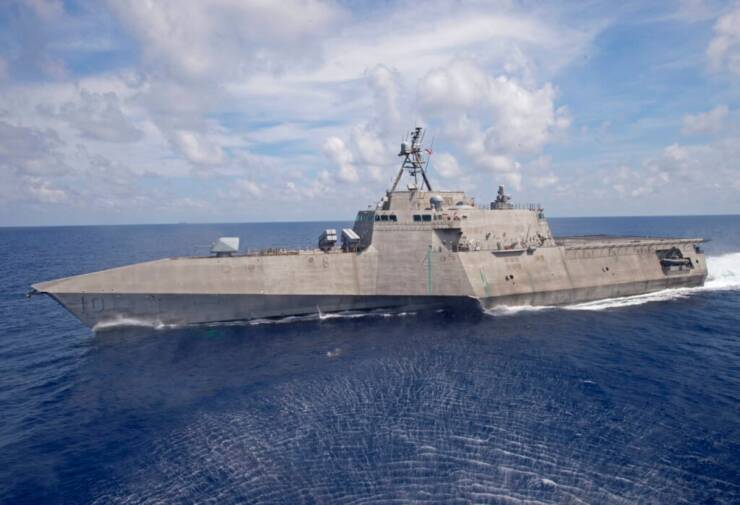
WASHINGTON: The US Navy plans to put its new Naval Strike Missile on 31 of its 35 Littoral Combat Ships (LCS) over the next 18 months, while outfitting 15 ships with an anti-submarine module, and 15 others with anti-mine capabilities.
That breakneck pace of the proposed LCS upgrades is the clearest sign yet of the Navy’s concern over its being outgunned by the Chinese surface navy, and the premium being placed on keeping eye on new generations of capable Chinese and Russian submarines prowling below.
The new details were offered by Adm. Mike Gilday in testimony before the House Appropriations defence subcommittee, representing his most ambitious public comments concerning the LCS fleet to date.
The LCS class has struggled to find a place in the fleet after its original mission modules — designed to be moved on and off ships given whatever mission they were performing — failed to develop as planned. But Adm. Mike Gilday told the committee, “We’re very bullish on LCS” moving forward, a departure from previous comments where he portrayed the class as a problem to be surmounted.
Earlier this year, the Navy announced it would stop accepting delivery of the Lockheed Martin-built Freedom-class LCS while the company tests and fixes a major propulsion issue found on all 16 ships. The halt was another black eye for a program that has yet to prove its utility, despite the delivery of around 20 ships across two classes over the past decade.
The Naval Strike Missile, the result of a Raytheon-Kongsberg partnership, is quickly emerging as a weapon that will play a central role in the Navy’s plans to defend itself at sea. Not only will the missile, with a range of about 115 miles, be bolted aboard 31 Littoral Combat Ships, but it will also be aboard at least the first 10 Constellation-class frigates slated to enter the fleet later this decade.
The Navy work will be contingent on funding, and with the 2022 defence budget not expected until sometime in May, it’s unclear what systems will be a priority. Earlier, Senate Armed Services Committee chair Sen. Jack Reed said that his committee won’t begin their mark-ups of the budget until July, a delay on work usually done in May.
The delay will leave the month of May open for hearings to consider the two dozen nominees the Biden White House has sent the Senate in recent weeks. Reed also said he expects Defence Secretary Lloyd Austin and the members of the Joint Chiefs to testify about the budget sometime in June.
The proposed work on the LCS is in keeping with broader plans for the Naval Strike Missile hatched by the Navy and Marine Corps over the past two years.
Early efforts so far include possibly outfitting some amphibious ships with the missile, a move in line with the wider push to add more punch to the US fleet as China and Russia deploy their own medium and long-range weapons out to sea.
The Corps has been working for two years to develop a way to launch anti-ship missiles from shore-based ground vehicles, and has developed a plan to launch the NSM from the back of a modified Joint Light Tactical Vehicle.








